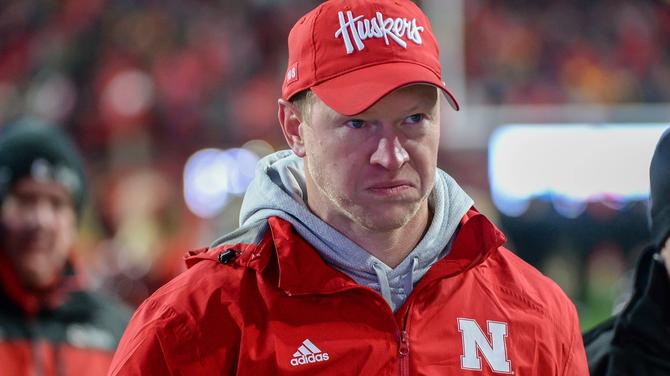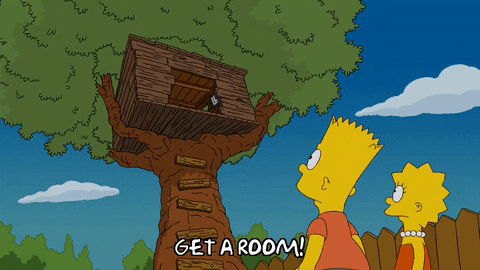🐤 Tear down that (cultural) wall
A new study suggests that interactions with different cultures and ethnic groups can reverse ingroup biases and improve empathy.
| Wednesday | August 31st, 2022 | |
 | |
It's brain food Wednesday, chirpers. Welcome to another Wonderful Wednesday and hopefully, you're drinking your green tea and spreading joy around the world. Our feature story today looks at how interacting with people of different groups can erase biases and increase empathy. While that seems obvious, it goes beyond repeating certain words and phrases on social media and searching for impressions instead of improvement. A bit deep, right? Our brains are complicated, and understanding how the brains function can go a long way in improving our quality of life and mental state. Let's jump into the news, shall we? -Walter Yeates World
The BreakdownA quick look around the world. Steven Branscombe/Getty Images
Steven Branscombe/Getty Images
🏈 Are things getting Frosty within Nebraska football? Scott Frost claims he does not have a problem with his offensive coordinator Mark Whipple despite apparent criticism on Saturday. The team blew a double-digit lead in the second half and lost 31-28 to Northwestern. It's been a long time since Nebraska was competing for national championships, and alumni Frost is desperately attempting to raise the team back to that level. 🤖 Microbots can do what with teeth? Researchers from the University of Pennsylvania recently demonstrated a proof-of-concept study displaying a handless device that could successfully automate the treatment and removal of dental plaque and bacteria. That's right; now we're developing ways to give everyone a great smile. 🖥 Best Buy's earnings are better than expected. Best Buy saw a stock price jump after the electronic retailer posted earnings and revenue that beat analysts' estimates and stuck with the full-year financial forecasts it provided in July. Go Best Buy. 😕 Texas reports the first U.S. death linked to Monkeypox. A monkeypox patient in Texas has died. The individual was extremely immunocompromised, and officials are searching whether Monkeypox played a role in their death. Thus far, there have been 18,000 cases of Monkeypox in the U.S. and 48,000 worldwide. Share this issue:culture
Brain Imaging Suggests A Great Way To Reverse Cultural BiasesSeemingly, speaking to other cultures and ethnic groups can end biases. Is that shocking? Jay Sprogell via Giphy
Jay Sprogell via Giphy
A Look Into The StudyA brain imaging study published in the journal Neuropsychologia entitled 'Racial outgroup favoritism in neural responses to others' pain emerges during sociocultural interactions' in the September 9, 2022 edition is making waves. The study found students with low melanin in their skin from outside of China showed stronger neural responses to pain in Asian faces as compared to those with lower melanin in their skin. Meaning interactions with those with differing degrees of melanin, of different ethnicities, and nationalities increase the level of empathy people feel toward those individuals. Why The Study Is ImportantCurrent studies suggest people often respond more strongly to those from the same cultural identity as their own, possibly attributed to thousands of years without globalization and continued isolation on societal and cultural grounds even to this day. Study author Yuqing Zhou, a postdoctoral researcher at the University of Wuerzburg said about the findings, "Racial ingroup favoritism in empathic brain activity has been widely observed and is associated with biased behavior toward same-race and other-race individuals," he continues. "Therefore, it is important to understand how racial ingroup favoritism could be changed through daily sociocultural experiences. This would help with the development of the future intervening approach to reduce racial ingroup favoritism." Share this story:world news
Mikhail Gorbachev Dies, His LegacyThe last leader of the Soviet Union who led radical reforms (Perestroika) that ended the Cold War died at 91. Brad Barket/Getty Images
Brad Barket/Getty Images
The Last Leader of the Soviet Union Dead At 91Mikhail S. Gorbachev, the last leader of the Soviet Union, often associated with pushing perestroika and glasnost, died at the age of 91. His death was announced by Russian news agencies -- without a cause of death attached to any of the reports. His radical reforms led to the collapse of the Soviet Union, although Gorbachev did not foresee nor seemingly want the rise of nationalistic, authoritarian Vladimir Putin. In his six years as General-Secretary of the Soviet Union, Gorbachev challenged the old guard to change the tenor of Russia, hoping to bring about a more positive future. His Lasting LegacyWhile Gorbachev is thought by scholars to have remained a Marxist-Leninist Socialist, he wished to use creative thinking to tackle the needed reforms need to prevent the Soviet Union from becoming a Third World country and better serve its people. While the old guard of the Soviet Union quickly regained a hold of power in Russia with Putin becoming an autocrat with his inner circle of warlords and oligarchs -- Gorbachev's courage for change at least gave Russia a chance to change. Share this story:environment
Living In Timber Cities Could Avoid Emissions, Say LessTreehouses could help fight dangerous emissions. The Simpsons via Giphy
The Simpsons via Giphy
Timber Houses Could Save The EnvironmentHousing a growing population in homes created of wood instead of steel and concrete could avoid more than 100 billion tons of emissions of greenhouse gas CO2 until 2100, a study by the Postdam Institute for Climate Impact Research shows. Abhijeet Mishra, a scientist from the Potsdam Institute for Climate Impact Research (PIK) and lead author of the study published in Nature Communications spoke about the study, "More than half the world’s population currently lives in cities, and by 2100 this number will increase significantly. This means more homes will be built with steel and concrete, most of which have a serious carbon footprint," he continued. "But we have an alternative: We can house the new urban population in mid-rise buildings – that is 4 to 12 stories – made out of wood." How Would These Timber Houses OperateCreating timber houses would increase timber harvests, while it could also preserve the most valuable forests. However, questions regarding how the homes would hold up to severe weather or if they could be protected against bug infestations exist. Despite those questions, there isn't a reason why timber constructions couldn't be used to lower emissions. Share this story:comic
 Instagram: @eyewashcomic
Instagram: @eyewashcomic
|

Written by Walter Yeates 90 N Church St, The Strathvale House Copyright © 2022 Early Chirp. All rights reserved. |




